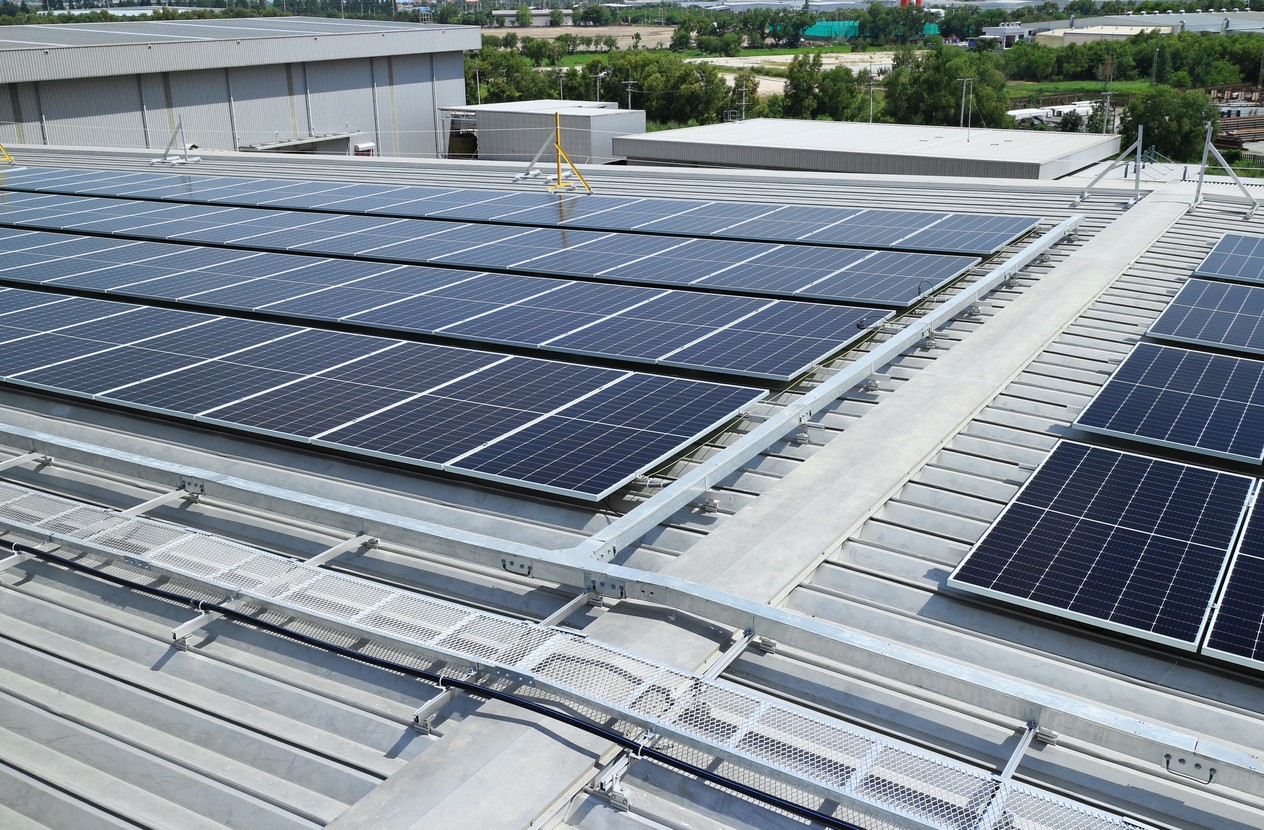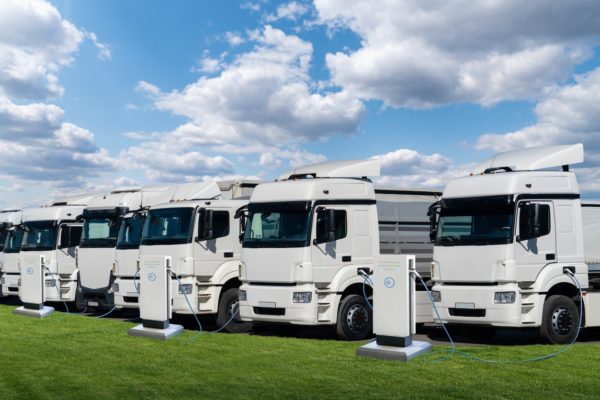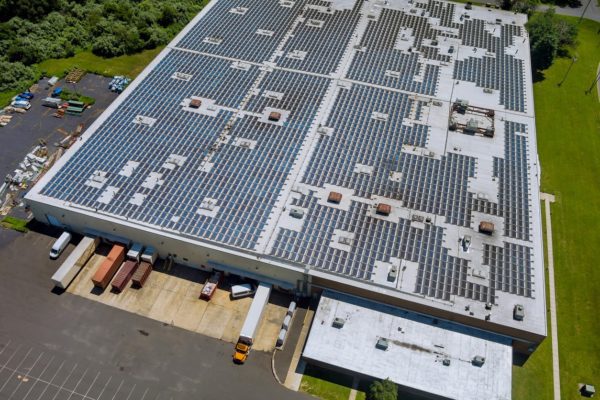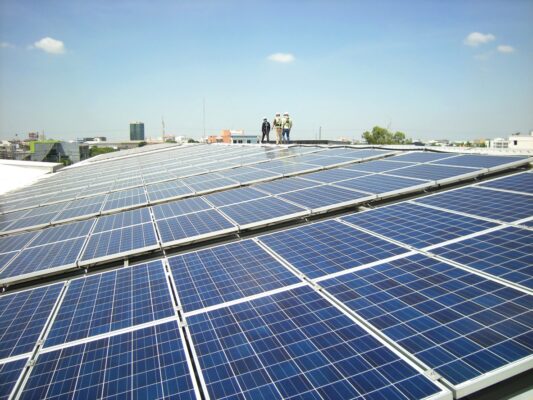
The WAIRE program came forth as an initiative by the South Coast AQMD. It enforces a menu-based point system to sanction warehouse owners and operators that carry out environmentally harmful procedures. More precisely, a WAIRE program aims to regulate the use of machinery and equipment that is more eco-friendly than diesel and gasoline.
Warehouse operations are very pollutant dense. For instance, operators’ conveyor belt machines and other equipment for loading and unloading goods use fuel to work. Pair that with a heavy volume of trucks, tractor-trailers, and the fumes they release. A working unit and storehouse contribute to greenhouse gasses like carbon dioxide and nitrogen.
These gasses are not suitable for the environment, accumulating in the atmosphere and damaging the earth’s ozone layer. This layer surrounds the world and keeps the harmful UV rays from the sun from reaching the earth’s surface. When the ozone layer is damaged, it makes way for global warming, leading to melting ice-capped mountains, resulting in flash floods and other environmental catastrophes.
There are different ways warehouse operators and owners can implement the WAIRE ruling, and one of the first ways is by imposing a point system and WAIRE ruling, which warehouse owners have to follow. Do you want to know more about this WAIRE ruling? Then read further as this piece goes further into this topic.
Warehouse Pollution and How WAIRE RULING is Impactful?

Every year in the communities of Southern California, harmful chemicals such as carbon, nitric oxides, and methane emissions contribute to the climate crisis. These chemicals are invisible to the human eye. Still, the havoc they create is slowly starting to impact human life—even static bus releases harmful vapor in the warehouses, which also goes for the truck.
Study shows that Southern California has some of the worst quality in terms of air purity profiles in the nation. This could simply be due to the excessive gas and diesel leakage that carry cargo from one state to another. To make matters worse, the tanks that store the fuel also leak sometimes, leading to appalling situations.
During the pandemic, shipping companies have seen a huge increase due to the rise in e-Commerce activities. These huge profits and growths are coming at the expense of the environment. Policies such as the WAIRE program are implemented to counter this alarming situation. As more warehouses grow, the nearby communities and residents will suffer unless the owners and operators mandate better and safer operations.
These can include electric trucks and eco-friendly equipment that does not rely on the combustion of fossil fuels. The pandemic has made it clear that warehousing can become a big issue if proper ruling and measures are not implemented. Big corporations can leverage poor communities with no option but to live near industry sites.
Without proper regulation, the regional warehouse locations will fail to meet the minimum federal air standards, and they have continued to do so for 30 years. With the introduction of the WAIRE Program, there is a reason for the nearby communities to stay optimistic. It allows warehouse owners and operators to seek technology that pushes them away from methods and practices that lead to pollutants.
Regulators must implement this ruling so warehouse owners can easily make this transition. The rule to shift to cleaner technologies such as solar power and electric vehicles of trucks is a great responsibility and authority of South Coast Air Quality. Learn more about it from its official website.
More About WAIRE

The warehouse Actions and Investments to Reduce Emissions (WAIRE) program also goes by Rule 2305, which is why many policymakers consider it a ruling. The counties that are subject to this ruling are Riverside County, Orange County, and Los Angeles County. Due to this ruling, warehouse owners can move towards developing warehouse practices that do not contribute to the detriment and destruction of the environment.
With the help of this program, warehouse owners and operators can abide by environmentally friendly rules and policies which encourage local and regional warehouses to move towards greener alternatives. The South Coast Air Quality Management District’s quality criteria introduce regulations allowing only a limited amount of emission.
Thanks to the South AQMD’s launch of the WAIRE Program in May 2021, many factory owners and operators have turned to measures and protocols that do not cause harm to the air quality. Nitrogen toxicity, especially in air pollution, can be critically dangerous for human consumption. Below, you will learn about the harmful impacts of increased nitrogen in the surrounding, and why it is essential for warehouse owners and operators to consider their carbon footprints.
The Impacts of Nitrogen Pollution
There are five major impacts of nitrogen pollution. Nitrogen pollution links to the formation of particulate matter, which is one of the primary ingredients of air pollution and smog. The percentage of particulate material in the atmosphere is way beyond the standards of the World Health Organization’s recommended concentration amount.
The human health impacts of outdoor air pollution costs are significantly high. Nitrogen pollution within water bodies gives way to the abnormal growth of algae and plants. Due to these excessive growths, water bodies start to experience dead zones, areas on the water that do not support aquatic life. Here, fish and other water species cannot survive.
There have been around 880 ocean dead zones worldwide, which is only rising. Initiatives such as the WAIRE ruling and other measures on an institutional level are the only way you can counter these problems on a large scale. Soil pollution is another issue that excessive nitrogen emissions can be responsible for, as it can drastically increase the soil’s acidity and damage the soil’s microbial properties.
These communities of microbes allow the soil to have the capacity to support life. It is widely known that an increase in nitrogen in the atmosphere can be harmful to biodiversity, both in aquatic and terrestrial environments. This results from nitrogen-based plants since they tend to outgrow and outcompete other species. Not to mention, nitric oxide is a potent greenhouse gas that can also give rise to global warming.
This gas also damages the ozone layer, which protects life on earth from harmful ultraviolet radiation from the sun. Policies and rules such as the WAIRE program allow the logistics sector to reduce nitrogen pollution and gradually and collectively make the atmosphere more breathable and sustainable for the people.
Complying with the WAIRE Program Ruling

To comply with Regulation 2305, the warehouse must receive the appropriate WPOC. Every storehouse must get or earn this number of coins. You must fully understand how points are calculated to make the correct number of issues.
Truck trips are considered one-way trips. During these excursions, vehicles or tractors transfer goods from the warehouse to the specified destination. The voyage begins and ends when the car enters or departs the facility. A truck visit consists of two travels for each visit. Each journey during compliance time qualifies as a Weighted Annual Truck Trip, according to Rule 2305. The website provides an equation enabling warehouse managers participating in the WAIRE initiative to traverse the point system quickly.
To begin with, any warehouse operators susceptible to the requirements—for example, those operating on more than 100,000 square feet of land in a single facility and located near Californian counties—are expected to file reports with South Coast AQMD. This report must include various information, such as complete information on logistical operations and their conformity to Rule 2305.
How Warehouses Owners Can Benefit from Solar Energy

Coldwell Solar provides solar-powered energy generation alternatives for warehouses. Consult our experts to design and carry out the conversion of solar energy-producing equipment. Our knowledgeable personnel can create a one-of-a-kind warehouse plan that conforms to the WAIRE Standard.
Power prices are constantly rising. Power is generally 15% of a warehouse’s total operating expenditures. Solar energy technology runs 17% to 27% less than commercial and industrial equipment.
Finding alternative energy sources, such as solar energy, is an effective method to minimize your expenditures as a warehouse operator if your firm requires a lot of electricity to run equipment and interior and exterior lights.
Solar energy solutions from Coldwell Solar enable warehouses to satisfy WAIRE implementation guidelines easily. Alternative energy-generating technology might drastically reduce nitrogen emissions, contributing to the environment’s improvement. To protect the environment, South California warehouses are incorporating solar-powered power sources.
After discussing your needs with us, our specialists will create a thoughtful plan for your particular warehouse that will enable it to satisfy the standards of the WAIRE program quickly.

